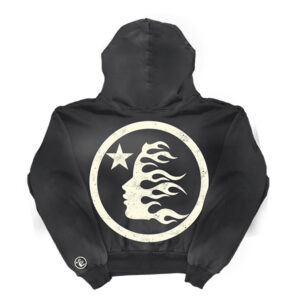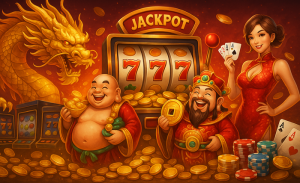Among the wild cast of Kimetsu no Yaiba, Inosuke Hashibira grabs attention with his boar mask, loud energy, and most of all, his banged-up swords. While most Demon Slayers carry gleaming Nichirin blades, Inosuke purposely beats up his steel, giving the edges a ragged, toothy look that matches the way he charges into battle.
So why does this rough fighter ruin his own weapons? The reason blends smart strategy, personal growth, and a dash of pure symbolism, making his choice way deeper than it seems at first glance.
The Unique Swords of Demon Slayer
Understanding Nichirin Blades
Nichirin blades sit at the heart of every Demon Slayers gear. Forged from metal that soaks up sunlight, these swords hold the one power that can wipe demons out for good. Each blade shifts color to match its owners breathing style and spirit, forming a bond between fighter and weapon.
Most Demon Slayer swords keep that flawless, shiny look-smooth, sharp, and perfectly balanced. The skillful smiths behind them treat each blade like a work of art, crafting it with pride that shows in every line and curve.
The Meaning Behind Sword Colors
Every Nichirin blade changes color, and that hue tells a lot about the wielder:
- Blackblades, like Tanjiros, hint at Sun Breathing or other rare styles.
- Yellowblades belong to users of Thunder Breathing.
- Blueswords match Water Breathing fighters.
- Redblades show Flame Breathing users.
- Greenswords signal mastery of Wind Breathing.
Inosukes swords have a strange blue-gray shade, showing his Beast Breathing-a personal style that skips the classic Demon Slayer rules.
Inosukes Raw Fighting Style
The Wild Warriors Approach
Inosuke never sat in a classroom; he learned to swing a blade by surviving in mountain wilds. His Beast Breathing borrows from animal instincts, mixing brute force, wild lunges, and two swords in each hand.
While most Demon Slayers polish every cut for new technique, Inosuke just presses forward with a storm of hits. He moves like the boar he looks like-charging hard, dodging fast, and never letting his foe catch a breath.
Beast Breathing Basics
The Beast Breathing style has four signature moves, each built around the personality of its user:
First Fang: Pierce – A straight jab that drives in deep, perfect for sharp points.
Second Fang: Rip and Tear – Jagged slices that come from the sword’s rough spine.
Third Fang: Devour – A twin-wielding assault where both blades work like hungry jaws.
Most people think smoothly polished blades are the best. Yet Inosukes chipped, uneven edges give every strike more bite.
Why His Swords Look Tattered
Aggressive Fighting Style Demands
Inosukes wild, heavy strikes aim to rip flesh, not just cut clean lines. The broken edge acts like a saw, digging in deeper with every pass and slowing a demon’s ability to stay whole.
When he lands a blow, the gnarled steel tears rather than slides off flesh, leaving a wound that closes slower. For demons that heal fast, that split-second advantage can shift an entire fight.
Deliberate Weapon Modification
Its easy to assume he wrecks his swords simply by smashing them around. In truth, he chips them on purpose, using rocks whenever he pauses, setting the angle exactly how he wants it for the next attack.
This whole weapon-tweaking adventure gives a peek into how Inosuke picks up on gear without needing a textbook. He quickly figures out that standard swords wont keep up with the wild way he charges into a fight, so he builds blades that act more like him.
Durability vs. Sharpness Balance
Normal sword makers pour energy into keeping the edge clean and sharp because a smooth slice looks beautiful and cuts deep. Inosuke, on the other hand, cares more about the blade surviving hits, even after it grazes stone or bone.
His slightly-battered edges end up spreading the shock over several points instead of one weak spot, so the sword is much less likely to crack when a blow gets heavy. Thats exactly what he needs, since every swing and tackle of his is loud and proud.
Impact on Inosukos Character
Personality Reflection Through Weaponry
The nicked metal almost feels like a self-portrait- raw, offbeat, and still able to get the job done when push comes to shove. He turns his back on fancy rules in life, and by the same logic, refuses to let his blades bow to sword-tradition.
Those rough lines echo the mountains he grew up in, where looking pretty was a joke and staying alive was business. His gear tells the tale of a kid who had to learn the hard way, not from a dojo, but from the world daring him to lose.
Breaking From the Pack
When Inosuke purposely damages his swords, he isnt just being reckless; he is making a statement about the Demon Slayer Corps. While most Slayers honor tradition and stick to classic techniques, Inosuke carves out his own way-literal blade work included.
By modifying his gear, Inosuke sets himself apart in the field and shows that fresh ideas, not strict rules, can win fights. Those chipped blades tell everyone he wont be boxed in by how a “”proper”” Demon Slayer should look or act.
Growing With Every Swing
As the story moves along, Inosukes bond with his swords also grows. At first he dents metal as a handy tactic, yet over time he starts to value the skill it takes to forge a true Slayer’s sword.
Still, he keeps his rough, hands-on style. This balance shows he can honor craft while staying the wild, free spirit fans love-his identity stays intact even as he learns from others.
Chips That Tell a Story
Inosukes ragged blades do more than look cool; they question the idea that a weapon must be flawless to matter. Japanese culture often celebrates “”wabi-sabi,”” a way of finding beauty in cracks and change. Inosukes swords live that spirit, showing that a visible fault can turn into a hidden advantage when wielded with guts.
Survival Over Aesthetics
Inosukes Beast Breathing swords look battered and far from pretty, but he made them that way on purpose. Growing up alone in the mountains taught him fast that design doesnt keep you alive-a solid edge does. Each dent and scratch on his blade tells the story of long fights and narrow escapes.
Individual Expression
Where most Demon Slayers wield polished Katanas that match crowd expectations, Inosukes rough blades scream, Im different! The chips and jagged bits are his signature flair in a world that usually pushes everyone toward the same clean look.
Real-World Inspirations
Historical Precedents
History shows that not every war sword needed a smooth edge. Some cultures, from Vikings to Southeast Asian tribes, built weapons with spines or serrations so they could tear flesh as well as cut. Those rough designs worked when survival-stories, not trophies-were on the line.
Modern Applications
Today, military units carry knives with part-serrated blades for the same reason. Whether slicing rope, cutting gear, or forcing a way through heavy fabric, those teeth bite deeper and make a mess wounds doctors hate to see cleaned up.
Fan Theories and Interpretations
The Practical Warrior Theory
A lot of fans believe Inosukes battered steel shows he understands real battle better than those fed formal lessons. Instead of memorizing scrolls, he judges by feel; if something cuts, tears, or blocks, it has a place in his hand-forged fight plan.
The Symbolic Rebellion Theory
Some fans say Inosukes battered swords act like a flag he waves to show he hates rules and orders. By purposely chipping the blades, he sends a clear message: Ill carve my own road, not walk someone elses.
The Evolution Theory
Others read the damage as proof of evolution at work, a tool that changes to fit its masters hands instead of sticking to a factory design.
Why This Detail Matters
Inosukes rough weapons are not just a funny quirk; they prove how careful Demon Slayer is about linking a heroes growth, his moves in battle, and the little symbols that pop up on-screen.
The chipped edges work in the fight itself, tell us more about Inosukes wild past, and poke fun at the usual rules of sword-making. By hiding all these layers inside a simple prop, the show reminds viewers that its world is built on serious thought, not random cool scenes.
Moreover, the way Inosuke treats his Nichirin Blade nails one of the series bigger ideas: true strength often comes not from blindly following tradition, but from twisting it to match who you really are.







